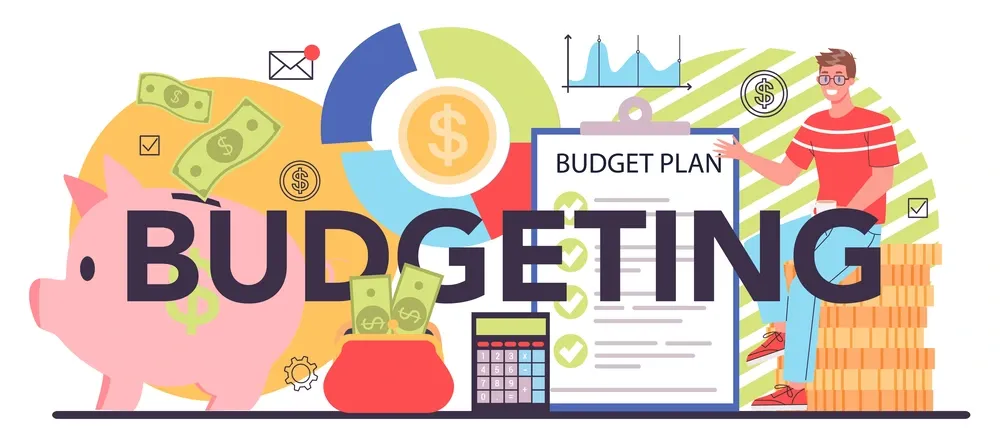The 50/20/30 Rule vs. The 70/20/10 Rule: Which Budgeting Method Fits You?
Budgeting can be a powerful tool for managing your finances and reaching your financial goals. Many people are familiar with the popular 50/20/30 budgeting method, but another alternative, the 70/20/10 budgeting method, may suit different financial lifestyles and goals. In this article, we’ll dive into each budgeting method to help you decide which one might be the best fit for you.
What is a Budgeting Method and Why is it Important?
A budgeting method is a structured way to allocate your income across various spending categories. By using a budgeting method, you can better control where your money goes, avoid overspending, and prioritize your financial goals. Choosing the right budgeting method can make a significant difference in achieving financial stability, building savings, and reducing debt.
The 50/20/30 Budgeting Method Explained
The 50/20/30 budgeting method is one of the most popular approaches, often recommended for beginners in financial management. It divides your income into three main categories:
- 50% Needs: Essential expenses, such as rent, utilities, groceries, and insurance, fall under this category. These are the non-negotiable costs required for everyday living.
- 20% Savings and Debt Repayment: This portion is dedicated to building your savings, investing for the future, and repaying any outstanding debts.
- 30% Wants: This category includes discretionary spending, such as dining out, entertainment, travel, and hobbies. These expenses enhance your quality of life but aren’t essential.
The 50/20/30 budgeting method is popular because it’s simple and provides a balanced approach to spending, saving, and enjoying life.
Pros of the 50/20/30 Budgeting Method
- Balanced Spending and Saving: This method allows you to enjoy discretionary spending while still focusing on essential needs and savings.
- Flexibility: You can easily adjust within each category based on your lifestyle and goals.
- Beginner-Friendly: The structure is straightforward, making it easy for beginners to implement.
Cons of the 50/20/30 Budgeting Method
- Not Suitable for High-Cost Living Areas: In high-cost cities, 50% may not cover all needs, making it challenging to follow.
- May Not Encourage Aggressive Saving: For those aiming for early retirement or large savings goals, the 20% savings portion may feel insufficient.
The 70/20/10 Budgeting Method Explained
The 70/20/10 budgeting method is another effective approach that divides your income as follows:
- 70% Living Expenses: This category covers all essential and discretionary spending combined. This method allows a larger portion for overall living expenses.
- 20% Savings and Investments: Similar to the 50/20/30 method, 20% of your income goes toward savings and investments.
- 10% Debt Repayment or Donations: This portion is set aside specifically for debt reduction or charitable contributions.
The 70/20/10 budgeting method works well for people who want to allocate a larger portion of their income toward immediate expenses, particularly if they have minimal debt.
Pros of the 70/20/10 Budgeting Method
- Higher Living Expense Allocation: The 70% category makes this budgeting method ideal for those with higher living costs or those who want more flexibility in their spending.
- Encourages Charitable Giving: The 10% allocation can be directed toward donations, which is ideal for people prioritizing philanthropy.
- Flexibility in Debt Repayment: For those with lower levels of debt, this method allows for a balanced approach without restricting lifestyle expenses too much.
Cons of the 70/20/10 Budgeting Method
- Less Aggressive Savings: Saving only 20% may not be ideal for those with large financial goals or retirement plans.
- Potential for Overspending: With more income allocated to living expenses, there’s a risk of overspending on non-essentials.
Which Budgeting Method is Best for You?
Choosing the right budgeting method depends on your personal financial goals, lifestyle, and income level. Here are some factors to consider:
Income Stability
If you have a stable income, the 50/20/30 budgeting method may suit you better, as it allows a balanced approach. If your income varies, the 70/20/10 budgeting method provides more room for flexible spending.
Financial Goals
For those focused on aggressive saving or investing, the 50/20/30 budgeting method might align better. If you prioritize living comfortably while saving a modest amount, the 70/20/10 budgeting method could be a good fit.
Debt Level
If you have high debt, the 70/20/10 budgeting method may be preferable, as it dedicates a portion specifically to debt repayment. For minimal debt, the 50/20/30 budgeting method may be effective as it balances spending and savings.
How to Start Using Your Chosen Budgeting Method
Regardless of which budgeting method you choose, follow these steps to get started:
- Calculate Your Monthly Income: Begin by understanding your total monthly income, including all sources.
- Determine Your Expenses: Break down your expenses into categories that match your chosen budgeting method.
- Adjust Your Spending Habits: Identify areas where you may need to reduce or increase spending based on your budget’s allocation.
- Track and Review Regularly: Monitor your spending and adjust as necessary to stay within your budget.
Combining Elements from Both Budgeting Methods
If neither of these methods fits perfectly, consider blending elements from both the 50/20/30 budgeting method and the 70/20/10 budgeting method. For example:
- Use the 50% Needs category from the 50/20/30 method and combine it with the 10% debt repayment from the 70/20/10 method.
- Adjust percentages to create a custom budgeting method that suits your unique financial needs.
Conclusion: Choosing Your Best Budgeting Method
Both the 50/20/30 budgeting method and the 70/20/10 budgeting method offer effective ways to manage your finances. Ultimately, the best budgeting method depends on your goals, debt level, and lifestyle. Consider your financial priorities, and don’t be afraid to adapt either method to suit your specific needs.
By selecting and implementing the right budgeting method, you’ll take a significant step toward better financial control and security.

